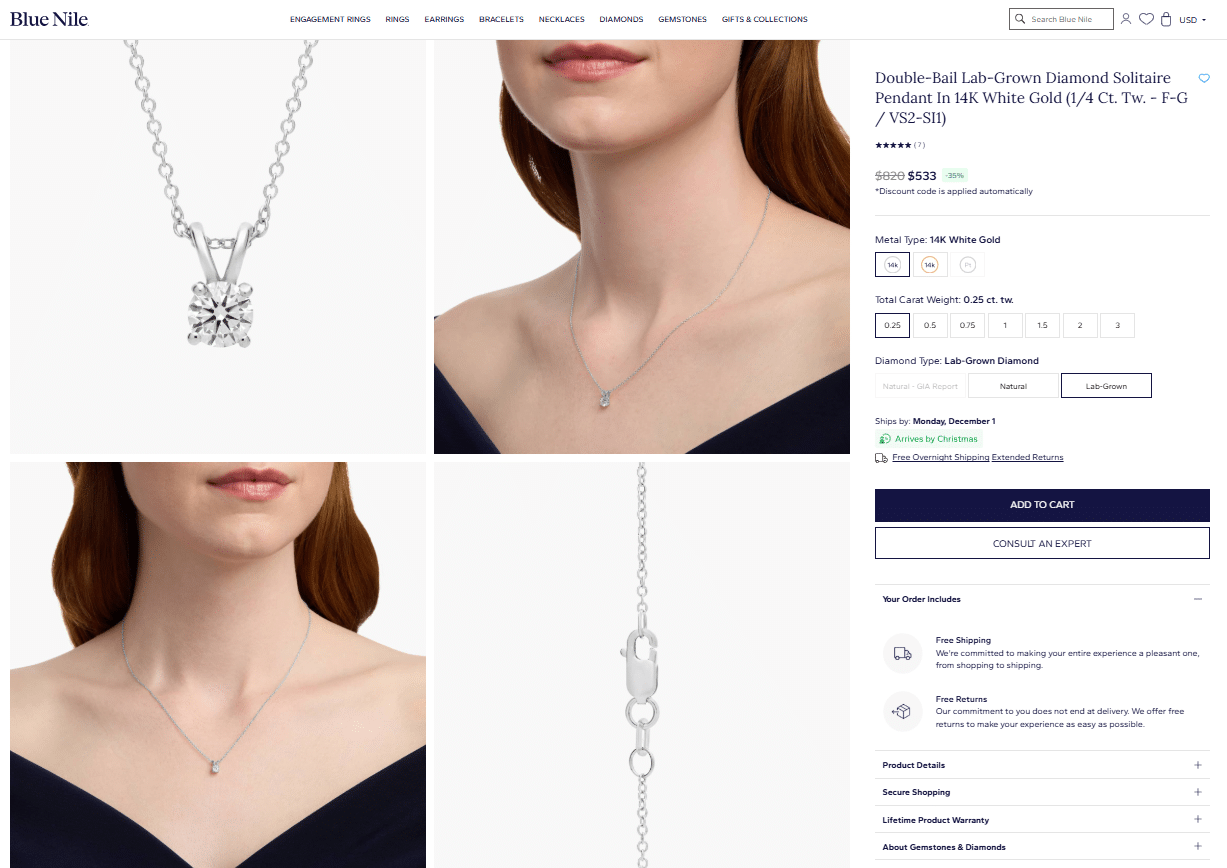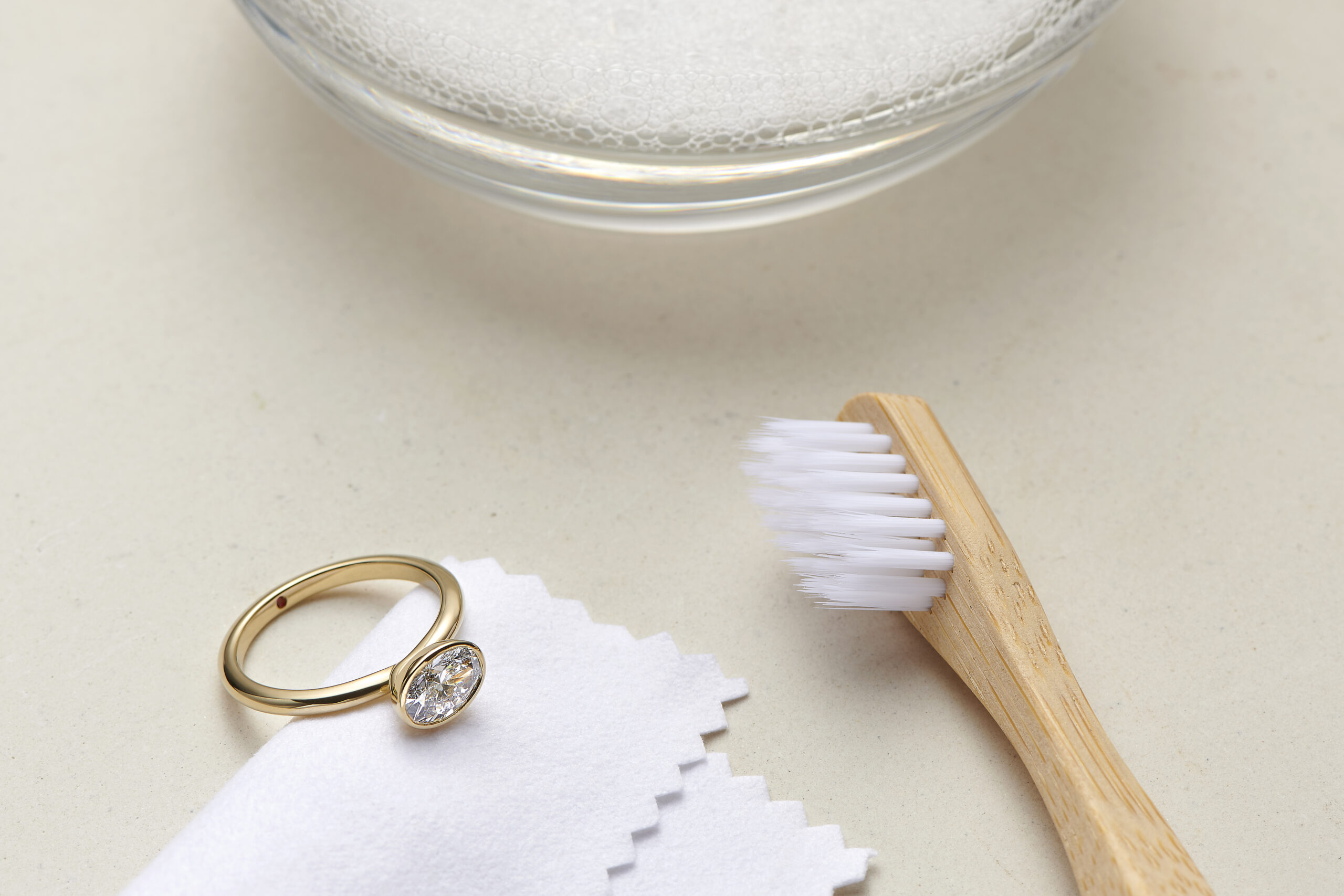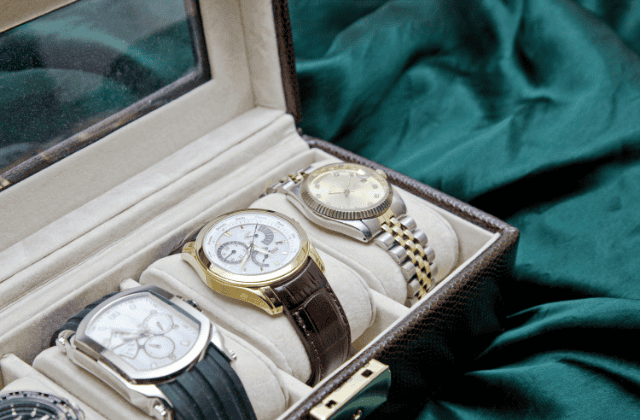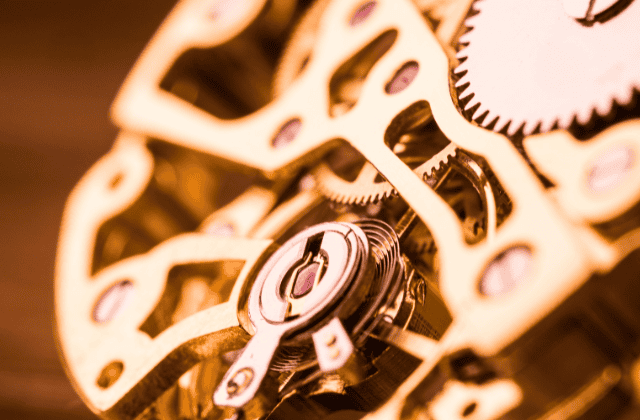Wondering about the difference between IGI diamond certification and GIA diamond certs?
You’re in the right place. In this Learning Guide, I’ll break down IGI vs GIA, answering the top questions people ask about these two leading diamond grading authorities.

- Is an IGI certificate better for lab grown diamonds?
- What’s the difference between IGI and GIA?
- Why are GIA diamonds harder to find?
Main Differences Between IGI vs GIA Diamond Certifications
The IGI vs GIA comparison starts with global reach — IGI has around 20 grading labs worldwide, while GIA operates fewer than 15 but is known for its elite standards.
When it comes to expertise, IGI vs GIA highlights different focuses: IGI centers on diamond grading efficiency, while GIA is globally recognized for advanced gemstone research.
In pricing, an IGI-certified diamond generally costs less, whereas a GIA-certified diamond of identical grades comes with a higher price tag due to its prestige.
Market value also differs — IGI certificates hold moderate recognition, while GIA-certified diamonds are regarded as more valuable and trusted among buyers.
Elevate your everyday elegance with this 14K White Gold Lab-Grown Diamond Solitaire Pendant
Which Diamond Certification Came First?
IGI Certification
The International Gemological Institute (IGI) grading laboratory provides both diamond grading reports as well owns 14 schools of gemology. However, most customers in the diamond jewelry industry know it as an independent laboratory that will grade diamonds. IGI Antwerp is the main headquarters.
It is the largest of the diamond laboratories that you’ll frequently see on the market. The IGI gemological laboratories were founded in 1975. Today, they have over 20 locations worldwide in places like Antwerp, New York, and Hong Kong — making IGI vs GIA one of the most common comparisons buyers encounter when choosing a diamond certification.
- Dubai
- Bangkok
- Hong Kong
- Shanghai
- Italy
- New York
GIA Certification
The Gemological Institute of America (GIA) also provides a grading system to determine a diamond’s quality in the form of a diamond certificate. In addition, the GIA is the world’s leading resource and research hub for all things in the gemstone and diamond trade and research. The GIA’s Graduate Gemologist degree is the highest honor one can receive in the jewelry industry.
Read also: What is GIA Diamond Certification?
The GIA doesn’t have as many campuses as the IGI lab, but has 14 locations around the world in places like:
- Taiwan
- China
- United Kingdom
- India
- Japan
The main hub is located in Carlsbad, California, in the United States. The GIA is most famous for creating the 4Cs of diamonds and is considered the gold standard for grading cut, color, clarity, and carat weight.
When comparing IGI vs GIA, the GIA consistently stands out as the more trusted authority in diamond grading.
James Allen is a trusted online jeweler offering GIA-certified diamonds with 360° HD viewing and transparent grading reports — ensuring confidence, quality, and authenticity in every purchase.
IGI Graded Diamonds vs GIA Diamond Grading
Both the IGI diamond certification and GIA diamond certification give reports with their diamonds, colored stones, or fancy colored diamonds. Let’s compare the similarities between the two grading authorities.
IGI Report
The IGI provides lab reports for natural diamonds, lab-grown diamonds, and colored gemstones. They were also the first gemological institution to offer grading and certification for entire jewelry pieces — for example, a full engagement ring rather than just the center diamond. When comparing IGI vs GIA, IGI stands out for its broader range of grading services, especially for finished jewelry items.
There are a few different reports available to customers under each category. The most popular report offered is the IGI Natural Diamond Report. On this report, you will find
- 4Cs assessment: cut, clarity, carat, and color grade
- Diamond shape
- Measurements and proportions
- Clarity characteristic plotting graph
- Laser inscription with report number

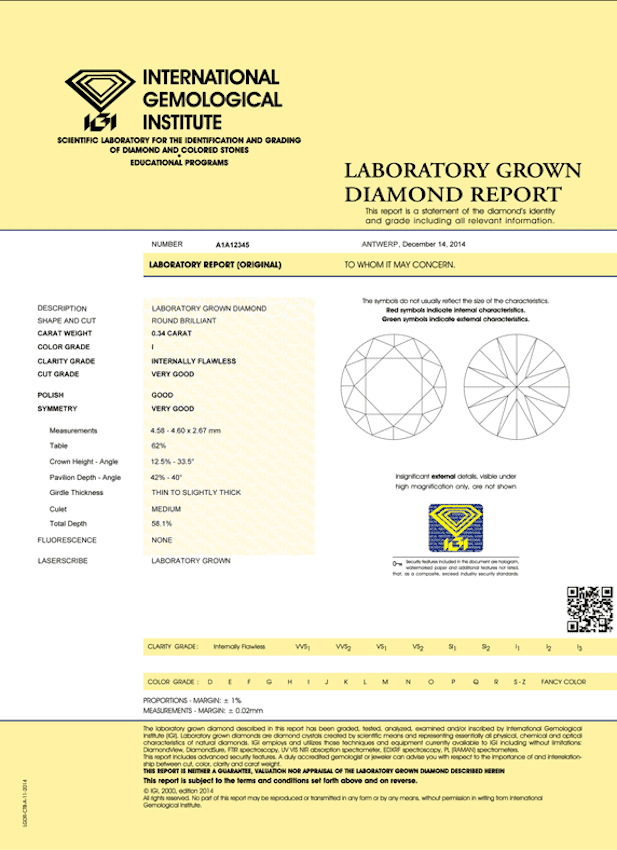
The Jewelry Report from IGI grades an entire piece of jewelry without the need to unmount it. This is especially useful for those who want a delicate heirloom engagement ring to come with an official report. When it comes to IGI vs GIA, IGI’s Jewelry Report is unique — offering a full evaluation of the finished piece rather than just the center stone. The report provides a detailed description of the jewelry that may include:
- How many accent diamonds
- Description of ring setting
- Total diamond weight
- Type of precious metal
- What karat gold (If applicable)
- They may contain other details unique to the engagement ring or jewelry piece.
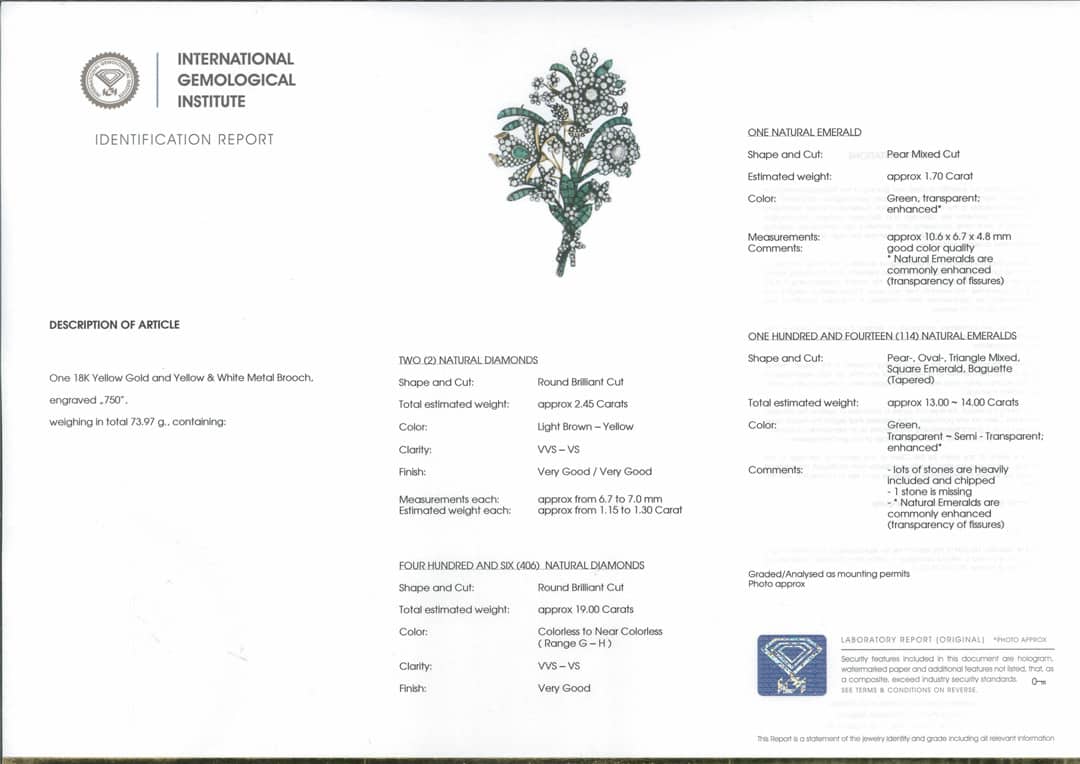
GIA Report
Like IGI diamonds, GIA diamonds can have multiple variations of diamond certificates. The main report is the GIA Diamond Grading Report. Unlike IGI, the GIA only grades loose diamonds weighing more than 0.15 carats — they don’t grade entire jewelry pieces. When comparing IGI vs GIA, both offer natural and lab-created diamond reports, but GIA focuses on precision grading for loose stones, while IGI covers a wider range including colored stones and pearl jewelry.
The standard diamond grading report is the GIA Diamond Grading Report. It is only used for a natural loose diamond graded at .15 carats or more. This report includes:
- Diamond cut grade
- Diamond color grade
- Diamond clarity grade
- Diamond weight
- Graphic of Diamond proportions
- Plotted diagram

The Natural Diamond Origin Reports includes the same as the GIA DGR in addition to:
- Confirmation of geographical origin
- Laser inscription of report number

The GIA Diamond Dossier Report includes all the same details as the GIA Diamond Grading Report (DGR), but it also features a laser inscription for added security. Buyers can also request a laser inscription on an engagement ring’s center stone even with a standard GIA report. When comparing IGI vs GIA, both offer advanced verification methods, but GIA’s laser inscription system and digital records through its mobile app make diamond authentication easier and more transparent than ever.
James Allen offers a wide selection of GIA-certified diamonds with clear pricing, 360° viewing, and precise grading details — making it one of the most trusted online retailers for quality and transparency.
IGI vs GIA Diamond Certification Summary
You know the information that both of these diamond grading authorities offer on their grading reports. Now lets see how the measure up from pros and cons standpoint.
IGI vs GIA Diamond Certifications: Pros and Cons
| Category | GIA Reports | IGI Reports |
|---|---|---|
| Pros | • Industry-leading strict grading standards. • Highly trusted — excellent for resale and trade-up value. • Offers diamond origin details on select stones. • Advanced laser inscription and digital verification via app. | • Certifies entire jewelry pieces, not just loose stones. • IGI-graded diamonds are more affordable than GIA ones. • Faster certification process — ideal for lab-grown diamonds. • Over 20 lab locations worldwide. |
| Cons | • Requires diamonds to be unmounted before grading. • Retailers like Kay or Zales may overcharge for certification. • Only grades loose stones (no jewelry reports). | • Grading standards considered slightly looser than GIA. • Lower resale and trade-up value. • Less preferred for high-end investment diamonds. |
Understanding IGI vs GIA Diamond Certifications (Video Explanation)
Learn What Makes IGI vs GIA Diamonds Different
If you’ve ever wondered which diamond certificate to trust — IGI vs GIA — this detailed video breaks it down clearly.
You’ll learn:
How each lab grades lab-grown and natural diamonds differently.
Why GIA maintains its reputation as the most accurate grading authority.
Why IGI has become increasingly popular for lab-grown diamonds because of its affordability and speed.
The video by Osiris Diamonds offers an in-depth comparison between IGI vs GIA, explaining which certification might be better for you depending on your goals — investment, engagement ring purchase, or everyday wear.
Watch this expert explanation to understand what truly defines diamond value and authenticity.
IGI vs GIA Conclusion: Which One Is Right for You?
It can be a little confusing when trying to buy diamonds with grading reports. There are many gemological laboratories that provide grading reports for both natural and lab diamonds.
If you’ve narrowed down your choices between GIA diamonds and IGI diamonds, let me give you my expert recommendation.
If you are buying a natural diamond, go for a GIA certified diamond.
If you are buying a lab diamond, both GIA and IGI are suitable laboratories.
Read also: Best Labs for Lab Diamond Certification
The reason why I opt for a GIA diamond over the IGI is simply because they’re the best. The GIA is the leader in everything gemology. They established the world standard for grading diamonds. They have strict standards for grading.
When compared to a IGI diamond of the same grade, it has been said that some IGI report grades fall below what they would under GIA certificates.
Furthermore, IGI diamonds used to be the go-to report for retailers. They have been replaced in that fashion by GSI certificates. They were originally intended to help the retailer, not the consumer.
Read also: GIA vs GSI Diamond Certification
While their reputation with natural diamonds is little spotty, the IGI was the preferred report for grading laboratory diamonds. At the time, the GIA provided lab diamond reports, but they were not as extensive. In 2020, the GIA revamped their lab diamond reports to expand their information and even the playing field. However, GIA certified lab diamonds are harder to locate than IGI ones.
Frequently Asked Questions about IGI vs GIA
1. What is the main difference between IGI vs GIA diamond certifications?
The biggest difference between IGI vs GIA lies in how each laboratory grades and verifies diamonds. The GIA (Gemological Institute of America) is recognized worldwide for its unmatched accuracy and consistency in grading — it sets the benchmark for the global diamond industry. On the other hand, IGI (International Gemological Institute) focuses on efficiency and accessibility, providing faster and more affordable certifications, especially for lab-grown diamonds and complete jewelry pieces. When comparing IGI vs GIA, GIA offers stricter grading, while IGI gives great value and speed for modern consumers.
2. Is an IGI certificate as reliable as a GIA certificate?
Both IGI and GIA are well-known, reputable grading institutions. However, when discussing IGI vs GIA, the GIA certificate is often considered the “gold standard” for precision and trust. GIA diamonds generally command higher resale value due to the lab’s uncompromising grading standards. IGI, while slightly more lenient in grading, is extremely popular among lab-created diamond buyers thanks to its quick turnaround and lower cost. In the IGI vs GIA debate, both are reliable — your choice depends on whether you prioritize strict accuracy or affordability.
3. Why do IGI certified diamonds cost less than GIA ones?
The IGI vs GIA price difference mainly comes down to grading strictness and brand reputation. GIA-certified diamonds often cost more because GIA’s name carries strong global trust and their grading tends to be more conservative. Meanwhile, IGI certifications allow more diamonds to achieve higher grades for color or clarity, which can lower the price for consumers. This makes IGI diamonds ideal for budget-conscious buyers who still want authenticity. In the IGI vs GIA market, IGI often represents the best balance between cost and quality — particularly for lab-grown stones.
4. Should I buy an IGI or GIA certified diamond for an engagement ring?
Your decision between IGI vs GIA depends on the type of diamond you’re buying. If you’re choosing a natural diamond, GIA certification is the best choice because it offers long-term value, credibility, and peace of mind. However, if your preference is for lab-grown diamonds, IGI is the most practical option — it provides fast, accurate, and affordable certification that still ensures transparency and trust. Many jewelers recommend IGI for modern engagement rings, making IGI vs GIA an easy decision for those valuing innovation and savings.
5. Are IGI and GIA certificates available online for verification?
Yes! Both laboratories provide online tools to verify certificates. In the IGI vs GIA verification process, you can easily enter the diamond’s report number on either lab’s official website to confirm authenticity and grading details. GIA even offers a mobile app for quick access, allowing buyers to check reports in-store or on the go. Whether you’re purchasing in person or online, verifying through IGI or GIA ensures that your diamond is genuine and matches its listed specifications — a key step in any IGI vs GIA comparison.


